We’ll increase conversions by
20-100+%
on your website.
Get a FREE Audit today
See how we can help your business increase conversion rates
How To Increase Click-through Rate

Introduction
Are you struggling to drive traffic to your website or increase the effectiveness of links in your email and campaigns to email clients? One important metric to focus on is click-through rate (CTR). This measures the percentage of users who clicked on a link compared to the number of impressions.
By improving CTR, you can generate more leads and revenue for your business. In this blog post, we’ll explore practical tips and techniques for increasing CTR across different channels such as organic search, Google Ads, email marketing, and social media. So buckle up and get ready to learn how to boost your click-through rates!
Understanding Email Marketing Click-Through Rate (CTR)
Click-through rate (CTR) is a crucial metric that measures the number of clicks your ads or content receive, and it’s essential for understanding how successful your campaigns are at driving user engagement.
Why is Click-through Rate Important?
Click-through rate (CTR) is a critical metric in digital marketing that measures the number of clicks an ad receives per impression it receives. Its importance lies in its ability to provide insights into the effectiveness of campaigns and support their performance. It’s calculated by dividing the number of clicks an ad receives by the number of times it’s shown, expressed as a percentage.
Optimizing for CTR is crucial for PPC managers, but it’s important to balance this with optimizing for business metrics such as sales or lead generation. A high CTR alone doesn’t necessarily translate to success if customers aren’t engaging further with your brand. However, increasing CTR can help improve engagement on various channels, including email marketing campaign, Google Ads, and social media platforms.
How CTR Is Calculated
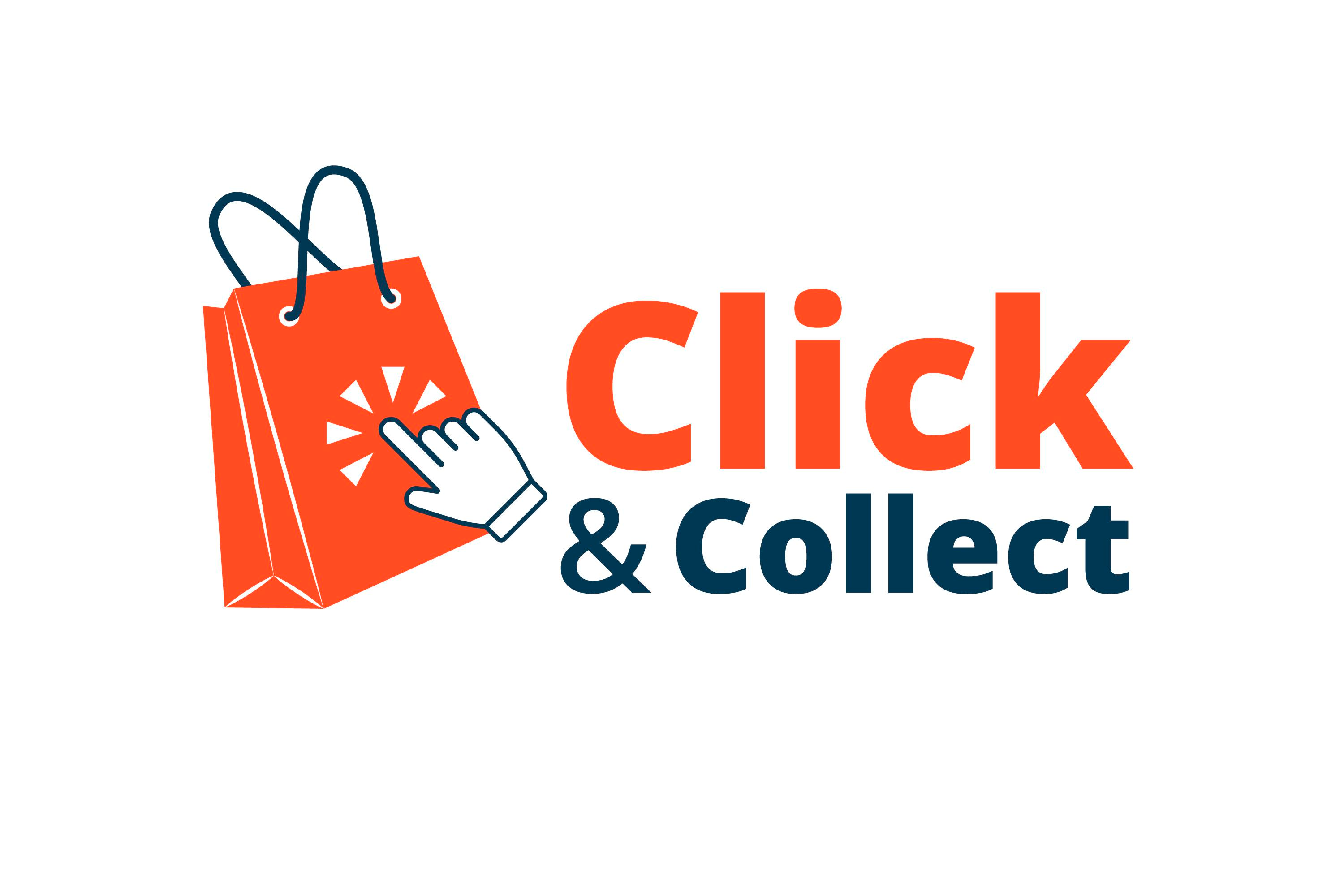
Click-through rate (CTR) is calculated by dividing the number of clicks your ad or content receives by the number of times it was displayed, and then multiplying that result by 100. For example, if your email received 1000 views and 50 clicks, you would have a CTR of 5%. A higher CTR indicates that more people are engaging with your content.
It’s important to note that different platforms calculate CTR in different ways. For instance, Google Ads calculates CTR for search ads based on the how many subscriber and how many subscribers often people click on an ad after seeing it while Facebook calculates CTR based on how many people clicked your ad compared to the total number of impressions served. Therefore, understanding how each platform measures CTR is essential when analyzing performance and making optimization decisions.
Factors That Affect CTR

The headline, ad copy, call-to-action (CTA), and landing page are all critical factors that influence your click-through rate. Keep reading to learn more about how you can optimize each of these elements for better CTR!
Headline
The headline is the first thing that users see, and it can make or break their decision to click through. Using numbers in the headline increases CTR since it gives users the impression of a list-style article. Also, including focus keywords in headlines improves visibility and makes them more relevant to users’ search queries.
Crafting an effective headline requires creativity and strategic thinking. It should be concise but convey value or benefit to the reader. Additionally, you can use strong words such as “amazing” or “proven” and add a sense of urgency by using phrases like “limited-time offer.” Ultimately, creating clear, compelling headlines will lead to higher engagement rates and better organic click-through rates (CTR).
Ad Copy
Ad copy is a crucial factor in improving click-through rates (CTR) for both organic and paid search. It’s important to write compelling ad content that resonates with your target audience. One way to achieve this is by using power words that create a sense of urgency or appeal to emotions, encouraging readers to take action.
In paid advertising, it’s also important to test different ad formats and extensions such as sitelinks or callouts. This helps identify the most effective ad variations based on CTR and conversion rates, leading to higher-quality traffic and better ROI. Additionally, highlighting pricing or promotions can help increase clicks while maintaining relevancy of the ads.
Call-to-Action (CTA)

A call-to-action (CTA) is an essential element of any successful marketing campaign. It directs users to take action, such as signing up for a newsletter or purchasing a product. According to industry data, CTAs have an average click-through rate (CTR) of 4.23%. To improve CTR and conversion rates, make sure your CTA is clear and eye-catching.
Using only one CTA per email has been found to increase both open rates and CTRs among mobile readers. A clear call-to-action encourages people to take the desired action by creating a sense of urgency with words like “Limited time offer” or “Don’t miss out.” By placing your CTA above the email fold on mobile devices, you can better capture subscribers and mobile device readers’ attention and boost overall click-through email open rates.
Landing Page
Your landing page plays a crucial role in your website’s click-through rate. The purpose of the landing page is to convert visitors into customers or subscribers by taking a specific action, such as filling out a form or making a purchase. A well-designed landing page should include visually appealing images, clear and concise copy, and an easy-to-use layout that guides the visitor towards the call-to-action.
To increase your landing page’s click-through rate, it’s important to optimize for both content relevancy and ad rank. This means ensuring that your landing page aligns with the keywords and intent of your PPC ads while also focusing on factors like load speed and mobile optimization. Additionally, providing social proof in the form of testimonials or success stories can help build trust and encourage visitors to take action on your landing page.
Tips For Increasing Organic Click-Through Rate (CTR)

To improve your organic CTR, consider using long-tail keywords, including engaging images and descriptive URLs, writing effective meta descriptions and headlines, localizing content, simplifying title formats, and implementing structured data.
Using Long-tail Keywords For Targeting
Using long-tail keywords in your content can significantly boost your organic click-through rate (CTR). Compared to generic and broad keywords, long-tail ones are highly descriptive and match specific search intent. By incorporating targeted long-tail keywords into headings and title tags, you can increase the relevance of your content to users’ queries.
Additionally, adding long-tail keywords to other snippet elements like meta descriptions can improve CTR as they provide a preview of what users can expect from clicking on the link. Optimizing on-page content with relevant long-tail keyword variations also helps enhance CTR by catering to different search intents and improving visibility for less competitive terms. Overall, using long-tail keywords is an important factor in boosting your organic CTR and driving more traffic to your site.
Writing Effective Meta Descriptions
Meta descriptions play a crucial role in improving organic click-through rate (CTR). A powerful and specific meta-description with emotionally charged language can increase CTR significantly. Customizing meta descriptions for each post is essential to improve organic CTR.
Including top queries in the page title and meta description can also lead to more clicks. It’s important to keep in mind that improving organic CTR through meta descriptions is an important aspect of search engine optimization, and should be part of your overall your content marketing strategy. By writing effective meta descriptions, you are more likely to capture the attention of potential readers or customers and encourage them to click on your link.
Simplifying Title Formats

Simplifying title formats is a critical factor in improving your click-through rate. A well-crafted title should inform potential readers what they can expect from the content while being concise and easy to read. By reducing the clutter in your titles and making them more straightforward, you can help site visitors focus on what’s important, which is the value of your content.
One tip for simplifying titles is to use clear language that leaves no ambiguity about what readers will find within plain text of your page or post. Avoid adding unnecessary adjectives or filler words that detract from the main message of plain text of the article same link. Your goal here is not only to attract clicks but also to provide an accurate depiction of what visitors should expect once they arrive at your page.
By following this technique, you’ll see not only higher rankings but also more clicks through organic search results pages since people are more likely to click on clear and concise headlines than those that confuse them with overly complicated jargon or terminology that might not be immediately understood by everyone who reads it online.
Implementing Structured Data
Implementing structured data is a key way to improve your website’s organic click-through rate. According to Search Engine Land, adding structured data can improve CTR rates by up to 30%. This means that you’re more likely to get clicks from users who are searching for topics related to your content.
Structured data allows search engines like Google to better understand and categorize the information on your website, making it easier for them to display relevant results in search engine pages. By using tools like Schema.org markup or JSON-LD, you can add structured data such as ratings, reviews, and product pricing into your web pages. Incorporating these elements not only helps with ranking higher in search results but also increases the likelihood that users will click through to your site when they see this additional helpful information displayed prominently in the search result snippets.
Including Images And Descriptive URLs
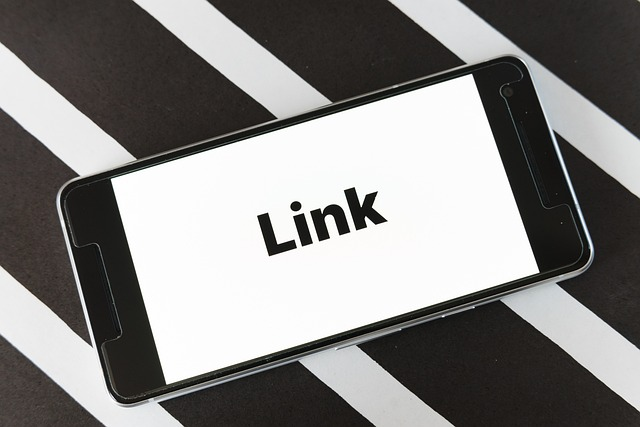
One effective way to increase organic click-through rate (CTR) is by including images and descriptive URLs in your content. Visuals can help grab the attention of potential readers, giving them an idea of what they can expect from your page. Meanwhile, descriptive URLs give users a clear idea about what the page is all about before even clicking on it.
Incorporating relevant and high-quality images into your content can also improve your email click chances of attracting clicks, as people are naturally drawn to visuals. Descriptive URLs, on the other hand, provide context for users and search engines alike. When crafting these user-friendly URLs, include relevant keywords that hint at what the content will entail which could entice users to click through to learn more.
Localizing Content
Localizing content is an effective way to increase click-through rates on your website. This means creating blog posts, landing pages, and other copy that are specific to a certain location or region. By targeting local keywords and using language that resonates with regional audiences, you can improve user experience and drive more traffic to your site.
According to recent studies, 72% of consumers prefer content in their native language, while 56% say localized pricing increases their likelihood of making a purchase. So if you want to attract customers from different regions or countries, localization is key. You can also use tools like Google My Business and schema markup to make it easier for search engines to identify your content as relevant for local queries.
Techniques To Improve Click-Through Rate In Google Ads

Choosing the right keywords and match types, writing compelling ad copy, highlighting pricing, and utilizing A/B testing are just a few techniques that can significantly improve your click-through rate in Google Ads – learn more by reading on!
Choosing The Right Keywords And Match Types
Choosing the right keywords and match types is essential for improving click-through rates (CTR) in Google Ads. Using keyword planning tools like Google Keyword Planner can help refine audience and budget, as well as generate new ideas for keywords. Broad match, exact match, and phrase match are some of the common keyword-matching options that can be used to target specific search queries and improve CTR.
In addition to choosing the right keywords, writing compelling ad copy is crucial for increasing CTR in Google Ads campaigns. Ad copy should focus on highlighting unique selling points and benefits of products or services while also incorporating a clear call-to-action (CTA). Testing different ad types and extensions such as site links or callouts can also help increase CTR by providing more relevant information to users before they even click through to the landing page.
Writing Compelling Ad Copy
Writing compelling ad copy is a crucial factor to improve click-through rate (CTR) in Google Ads. A strong ad copy should be concise, relevant, and highlight the benefits of your product or service. Utilizing power words, such as “limited time offer” or “exclusive deal,” can create a sense of urgency and encourage clicks.
In addition how to increase click through rate creating engaging content, it’s important to test different variations of ad copy. A/B testing allows advertisers to compare two different versions of an ad against each other and determine which one generates more clicks. Testing various calls-to-action (CTAs), highlighting pricing, and using negative keywords are all effective ways to increase CTR email click through rate when writing compelling ad copy for Google Ads campaigns.
Testing Different Ad Types And Extensions

Testing different ad types and extensions is an effective technique to improve click-through rate in Google Ads. Ad extensions, such as dynamic keyword insertion and pricing highlight, can provide additional information to potential customers and encourage them to click on your ad. By testing different ad types, small businesses also can identify which formats work best for their target audience.
A/B testing variations is also crucial in determining which ad type or extension works best. This allows businesses to compare different versions of their ads against each other and determine which ones have the highest click-through rates. Additionally, utilizing smart bidding strategies can help maximize the chances of a high click-through rate by automatically adjusting bids based on real-time data analysis. By continuously analyzing performance metrics and making necessary adjustments, businesses can optimize their Google Ads campaigns for success.
Highlighting Pricing
One effective way to increase click-through rate (CTR) in Google Ads is by highlighting pricing. Including the cost of your products or services in ad copy can attract potential customers who are looking for something within their budget. This strategy also helps qualify clicks, meaning that people who click on the ad are more likely to convert into paying customers.
It’s important to note that simply mentioning pricing isn’t enough – you need to ensure that it’s presented clearly and prominently. Using phrases like “starting at” or “as low as” can grab the subscriber’s attention and give potential customers an idea of what they can expect to pay. Highlighting any special deals, discounts or promotions can also encourage users to act quickly and click through to your website.
Overall, when used strategically, highlighting pricing in ads can be a powerful tool for increasing CTR and ultimately driving more conversions for your business.
Utilizing Negative Keywords
Utilizing negative keywords is a crucial step towards improving click-through rates in Google Ads. These are search terms that advertisers can exclude from their campaigns to focus on the more relevant keywords. By excluding irrelevant search terms, advertisers can ensure they’re only appearing for searches most likely to lead to clicks and conversions.
Adding negative keywords can also help improve overall campaign performance by ensuring the budget is being spent only on valuable clicks. For instance, if you sell high-end watches, using “cheap” as a negative keyword ensures that your ads aren’t shown to people looking for inexpensive or low-quality watches.
A/B Testing Ad Variations
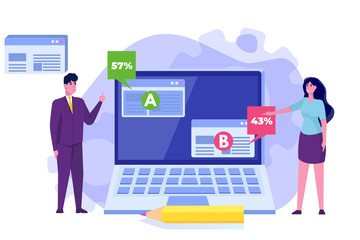
A/B testing ad variations is a crucial technique for improving average click through rate get-through rates in Google Ads. By creating different versions of an ad and analyzing which one performs better, marketers can optimize their campaigns to incite more clicks and increase conversions. This approach helps to reduce the cost per and average click through rate and rates while boosting the overall performance of the campaign.
In addition, A/B testing allows marketers to test various elements of their ads, such as headlines, descriptions, and call-to-actions (CTAs). Through randomized experiments with two or more variants of an ad, businesses can gather data-driven insights into how customers engage with their advertising messages. With this information at hand, they can refine their campaigns further and tailor it to better meet customer expectations.
Strategies To Increase Email Click-Through Rates

To improve email click-through rates, personalize email frequency, subject lines, and content, optimize for mobile devices, include clear calls-to-action text links, add social sharing icons and text links fewer emails, and design visually appealing email templates.
Writing Compelling Subject Lines And Email Copy
Writing compelling subject lines and email copy is a critical aspect of increasing click-through rates. The subject line is the first thing email recipients will see when they receive an email, and it can make or break their decision to open it. According to research, personalized email subject lines that include the recipient’s name can increase open rates by 10-14%. Therefore, taking time to craft personalization in your email campaigns can go a long way in your email click through rate and boosting CTR.
When writing email copy, it’s essential to keep things short and sweet while remaining relevant. Get straight to the point and avoid fluff – people have limited attention spans as it is. Use engaging language that speaks directly to your target audience, making them feel seen and understood. Furthermore, including clear calls-to-action encourages people to engage with your content actively. By following these tips and best practices for email marketing strategies, you’ll undoubtedly improve your email click-through rate!
Optimizing For Mobile Devices
Optimizing emails for mobile devices is essential in today’s market as more than 50% of emails are opened on mobile devices. To increase email click-through rates (CTR), it is important to format emails that are easy to read and navigate, with clear headings and images that load quickly. Additionally, using clickable HTML buttons or social sharing buttons can encourage people to interact with your email content more.
Website speed also plays a vital role in organic click-through rates, not just average of email CTR. Customers are less likely to wait for slow-loading pages, resulting in high bounce rates and lower overall CTRs. Ensuring that your website loads quickly across all devices including desktops, tablets or mobile phones will help you provide an excellent user experience which can lead to higher click through rates, conversions and sales over time.
Including Clear And Concise CTAs
A clear and concise Call To Action (CTA) is a vital part of any successful email marketing campaign. A CTA encourages readers to click on a specific part of the email and take them to the desired destination. In fact, including a linked CTA every 150 words or so in an average email, can increase clicks and sales.
To improve your email click-through rates, it’s important to have effective CTAs that are easy to spot within your emails. One way of doing this is by using good images with text overlays that encourage people to click through. Additionally, ensuring that your CTAs are placed prominently in your emails and using conversational language can also help improve more click throughs and overall engagement levels.
Personalizing Subject Lines And Content
Personalization is key to building a connection with your audience, and this holds true for email marketing. By personalizing subject lines and content in fewer emails, you can capture the attention of your subscribers and improve click-through email open rates. According to a survey, personalized emails can lead to a 29% increase in open rates and a 41% increase in click-through rates.
To personalize email clients and subject lines effectively, use subscriber data such as their name or previous purchase history. This small change can make the email feel more relevant and tailored to their interests. Additionally, including dynamic content to send emails that adapts based on each subscriber’s data, behavior or preferences can also be an effective way to boost engagement levels with email list.
When it comes to personalizing content within the your email campaign itself, consider segmenting your email list so that different subscribers receive specific messaging that caters to their unique needs or interests. Including targeted product recommendations based on their browsing history or purchase habits is one example of how you could do this. Overall, using personalization tactics throughout your email campaigns can significantly impact overall success metrics like click-through rates and revenue generated from those clicks.
Adding Social Sharing Icons
Including social sharing icons in your email campaigns can be an effective way to increase click-through rates. When you make it easy for email subscribers to share your email campaign and content on their own social media profiles, they are more likely to engage and interact with your brand. According to recent studies, emails with social sharing buttons have a 158% higher click-through rate than those without.
Moreover, including visually appealing clickable HTML buttons or image buttons as part of email marketing benchmark and a CTA placement that encourages people not only to open the email but also share its content can significantly impact the success of marketing campaigns. By adding relevant and engaging social sharing icons/buttons within an email campaign, you will enable email recipients and subscribers to promote the message across multiple channels while creating brand awareness from different perspectives.
Designing Visually Appealing Email Templates

When it comes to your email marketing strategy, a visually appealing email template can make all the difference in click-through rates. A cluttered design can turn off readers and decrease engagement. To increase your email click-through rates, consider using a clean and simple email template with high-quality images that support your content.
In addition, including videos in emails can further improve average email, and average click through rates and rate get-through rates by up to 300 percent. Videos are effective at grabbing the reader’s attention and keeping them engaged throughout the email. It’s important to ensure that your video is mobile-responsive so it doesn’t have any compatibility issues on different devices.
Overall, designing visually appealing email templates should be one of the strategies you utilize to improve your email marketing campaigns’ performance. By incorporating high-quality visuals such as images or videos into your emails, you could increase engagement and ultimately drive more business for your brand.
Techniques To Improve Click-Through Rate On Social Media

Creating visually appealing content, using call-to-action buttons, and maximizing reach through paid promotions are just some of the techniques you can use to increase your click-through rate on social media. Want to know some more tips? Keep reading! You can also check out our blog for more CRO tips.
Creating Visually Appealing Content
Creating visually appealing content is crucial when it comes to social media marketing. We live in a world where visual content is king and users are more likely to engage with posts that have images or videos. In fact, according to HubSpot, Facebook posts with images get 2.3 times more engagement than those without.
One way to create visually appealing content is by using high-quality images and videos that align with your brand and message. You can also use graphic design tools such as Canva or Adobe Spark to create eye-catching graphics, infographics, and animations that will grab the reader’s attention.
Remember to include call-to-action buttons on your visuals so that users know what action they need to take next. This could be an image button or anything from “Learn More” or “Shop Now” depending on what you want them to do. By creating memorable visuals and adding clear calls-to-action, you can boost your click-through rates on social media platforms like Facebook, Twitter, Instagram & Pinterest!
Using Call-to-action Buttons
Call-to-action (CTA) buttons are essential in increasing click-through rates on social media platforms. These buttons create a sense of urgency for readers to take action, whether it’s to visit a website or make a purchase. To maximize the effectiveness of CTAs, they can be designed using different formats such as small screen and as buttons or larger graphics, making them more noticeable and clickable.
When creating social media call-to-action examples, it’s important to consider split testing CTA positioning to improve the click throughs and-through rates. The placement of the button on the page can greatly affect its visibility and usage by readers. A clear call-to-action is also necessary to get readers to make more click throughs and more. Along with that, including an attention-grabbing subject line and offer can further increase interest and engagement from potential customers.
Maximizing Reach Through Paid Promotions
One effective way to improve click-through rates on social media is by maximizing reach through paid promotions. By investing in targeted ads, businesses can ensure their content reaches a wider audience with relevant interests and behaviors. This strategy allows for more precise targeting of potential customers and helps increase the likelihood of clicks.
Not only does paid promotion help increase reach, but it also provides data that can be used to optimize campaigns for even better results. With insights into what types of content resonate best with audiences, businesses can adjust ad copy and visuals accordingly, leading to higher click-through rates and more conversions overall. In fact, digital marketing methods have measurable results allowing for tracking statistics like CTR on social media platforms.
Analyzing The Performance Of Posts
Analyzing the performance of social media posts can provide valuable insights into how to improve click-through rates. It’s important to regularly track and analyze metrics like impressions, engagement, and clicks to understand what content resonates with audiences. By using this information, businesses can adjust their social media strategy to better target their audience and increase CTR.
One way to improve performance is by creating visually appealing content that stands out in a crowded feed. Using call-to-action buttons can also encourage users to click through to your website or landing page. Paid promotions can help maximize reach and drive more clicks, but it’s important to carefully monitor performance and make adjustments as needed. By continuously refining your social media strategy based on analytics data, you can improve overall CTR and achieve better results from your campaigns.
Best Practices For Increasing Click-Through Rate Overall
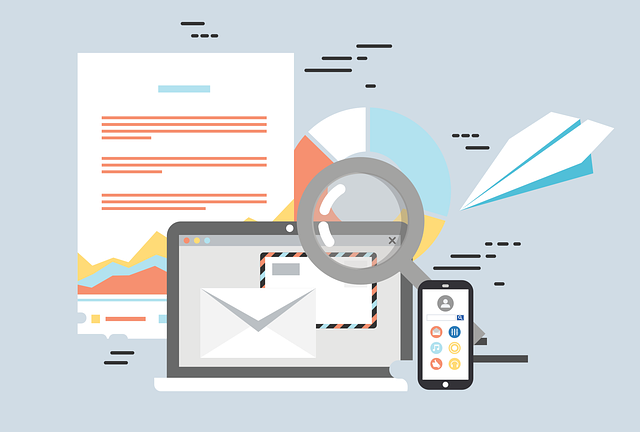
To increase click-through rate, regularly test and analyze marketing strategies, stay current with industry trends, optimize landing pages for higher CTR, utilize A/B testing to improve performance, provide value to the audience, refine email marketing campaigns by personalizing content and optimizing subject lines and CTAs, and create visually appealing social media content with clear calls-to-action.
Conducting Regular Testing And Analysis
Regular testing and analysis are critical for optimizing click-through rates on websites, emails, and social media campaigns. Without constant monitoring, it’s challenging to gauge the effectiveness of your marketing efforts or identify areas that need improvement. Therefore, it’s essential to conduct A/B testing by creating two variations of a campaign’s elements (headline or image) and see which one performs better.
It’s important to stay up-to-date with industry trends when conducting tests since what works today may not work in the future due to technological advancements or changes in consumer behavior. Additionally, focus on providing value to your audience while continuously refining your marketing strategy based on test results. Remember that success stories from other companies may inspire ideas but rely only on your own data because no single formula guarantees success for all businesses.
Staying Up-to-date With Industry Trends
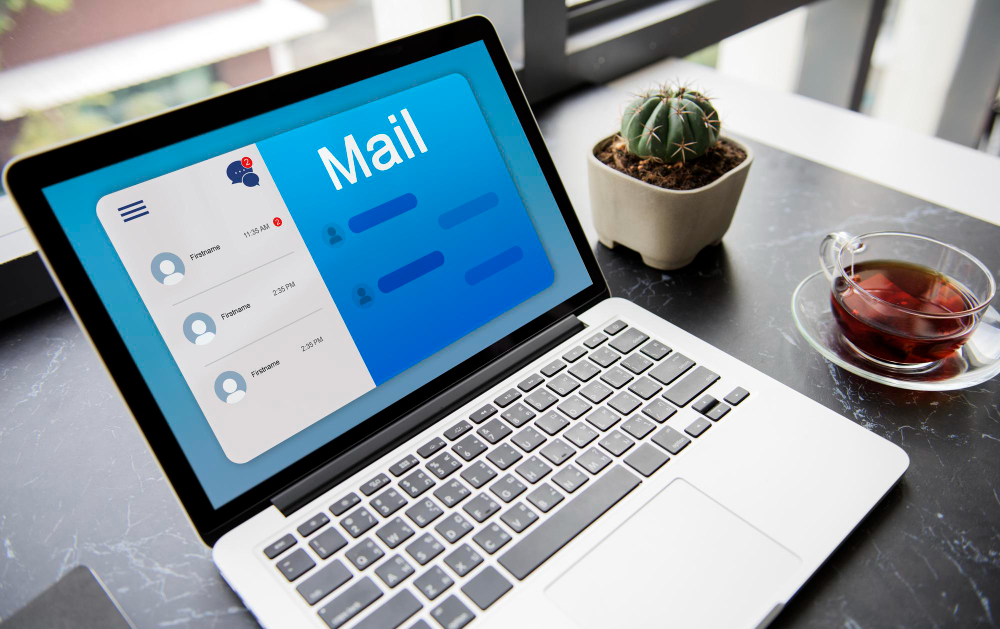
Staying up-to-date with industry trends is crucial for improving your click-through rates. With digital marketing constantly evolving, it’s important to keep an eye on the latest developments in order to stay ahead of the competition. For instance, keeping track of which social media platforms are gaining traction can be beneficial in deciding where and how to promote your business.
Additionally, staying current with email marketing trends can help you optimize your campaigns for higher click-through rates. For your email marketing benchmarks for example, personalizing email subject lines and content based on subscriber data has been shown to increase engagement.
Knowing what types of emails are resonating with subscribers and how often they want to hear from you can also lead to more successful campaigns.
Overall, by staying up-to-date with industry trends and incorporating best practices into your own email list and marketing strategy now, you’ll be well-equipped to improve your click-through rates and achieve greater success online.
Focusing On Providing Value To The Audience
Focusing on providing value to the audience is one of the most important factors in improving click-through rate (CTR). This means creating content that is relevant, informative and engaging. By understanding your target audience, you can provide them with tailor-made solutions relevant offers and products that resonate with their needs.
Providing value also involves offering free resources such as e-books, whitepapers, webinars or educational videos. These resources should be easily accessible and promoted within your marketing campaigns. By providing useful information without requiring payment upfront, you can build trust and loyalty among your customers who will eventually become brand ambassadors.
Furthermore, focusing on value creation means continuously refining your marketing strategy based on feedback from customers or analysis of data metrics. This allows businesses to identify areas for improvement and create effective strategies that drive higher CTRs over time. Ultimately this will help increase conversions, engagement rates and ROI for your business while retaining a loyal customer base through consistent delivery of high-value content.
Continuously Refining Email Marketing Campaigns Strategy
Refining your marketing strategy is a vital step towards achieving better click-through rates (CTR). By staying up-to-date with industry trends and conducting regular testing and analysis, you can optimize your campaigns for maximum impact. It’s important to focus on providing value to the audience by delivering relevant content in a way that encourages engagement.
Utilizing A/B testing is another effective way to refine your marketing strategy for higher CTR. This allows you to test different variations of ad copy, call-to-action (CTA) messages, and landing pages to determine which works best. You should also optimize landing pages for higher CTR by ensuring they are mobile responsive, load quickly, and contain only one clear CTA message that aligns with the user’s intent.
Utilizing A/B Testing To Optimize Performance
A/B testing is a powerful tool for marketers to optimize their campaigns and improve click-through rates. By comparing two different versions of a webpage or app, you can determine which one performs better in terms of conversions and leads. This data-driven approach allows you to continuously refine your marketing strategy and provide the best possible experience for your customers.
The goal of A/B testing is to identify elements that encourage users to click-through, such as calls-to-action, headlines, or images. By making small changes to these elements and analyzing the resulting performance metrics, you can learn what works best for your audience and optimize accordingly. In fact, some experiments have yielded astounding results with over 400% increases in conversions, highlighting the value of this method in improving overall campaign performance.
Optimizing Landing Pages For Higher CTR
One of the most critical factors that can impact your click-through rate (CTR) is optimizing landing pages. A poorly designed or slow-loading page can kill your CTR, resulting in lost leads and revenue. By crafting compelling headlines, keeping copy short and punchy, simplifying the layout, and using high-quality visuals or videos, you will be able to generate higher engagement rates.
Moreover, it’s important to ensure that your landing pages are mobile-optimized for a seamless user experience across devices. Additionally, use a clear call-to-action (CTA) button above the fold where users can easily spot it.
And finally, always test different variations of your landing pages to see what works best with your audience so you can continuously refine it for higher CTRs.
Tracking And Measuring CTR Using Analytics Tools
To improve CTR, it’s essential to track and measure performance regularly. Using analytical tools can help identify areas for improvement and optimize campaigns accordingly. Google Ads is a powerful tool that provides real-time data, including impressions, clicks, and conversions. Google Analytics offers insights into website traffic sources and user behavior on landing pages.
Another useful tool for tracking CTR is Hotjar. It allows you to see how users interact with your website through heatmaps, recordings of user sessions, and surveys. With this data in hand, you can make informed decisions about optimizing ad placement or CTAs on landing pages to increase click-through rates effectively. By using these analytical tools regularly, businesses can stay ahead of the competition by identifying trends early and adjusting their strategies accordingly.
Conclusion

In today’s competitive online landscape, increasing your click-through rate is essential for driving traffic and achieving business success. By optimizing your headlines, ad copy, and calls to action, you can boost organic CTR and maximize the effectiveness of your marketing campaigns.
For email campaigns, personalizing the subject line, lines and content can lead to higher open rates and improved CTR. Meanwhile, on social media platforms like Facebook, visually appealing content with clear CTAs can encourage users to engage and take action.
Ultimately, improving the click-through rate requires ongoing testing, analysis, and optimization. By staying up-to-date with industry trends and refining your marketing strategy accordingly, you can stay ahead of the competition and achieve greater success in all aspects of digital marketing. So start implementing these tips today to improve your click-through rate – the results will speak for themselves!








